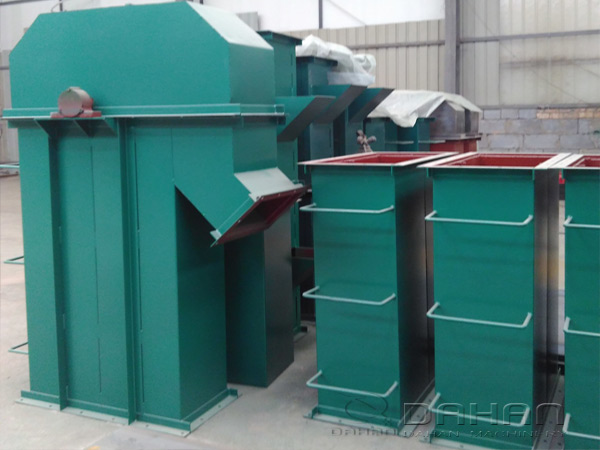Common Faults and Response Analysis of Bucket Elevator
Monday August-05 2019 12:00:17
1. Blockage
The tail housing is filled with material, which makes the belt slippery or unable to operate.
Reason:
• Early feeding and late starting of elevator;
• The belt tension is insufficient and slippery, and the belt tension is insufficient.
• Excessive supply;
• Bulk material falls into the base of the machine to jam the hopper.
• too much recycling and clogging.

Method of preventing blockage of elevator:
• strictly observe the driving and parking procedures;
• adjust the tension device to ensure the necessary tension of the traction belt;
• The feeding quantity of elevator is moderate and stable.
2. Recycling
Material that does not leave the hopper or hopper but does not enter the discharge pipe during discharge. The conveying efficiency is reduced and the base is blocked when the elevator returns more materials.

Reasons for returning materials:
• The hopper movement speed is not appropriate or does not coincide with the unloading mode, such as centrifugal unloading, the speed is too high. Discharging too early, reflecting into the base; gravity unloading, too low speed, unloading too late, fall into the base;
• The shell shape is unreasonable or does not coincide with the unloading mode.
• blockage of outlet opening;
• The spacing between buckets is not appropriate;
• The gap between the discharge baffle and the return bucket of the elevator is large, and the discharge baffle is worn seriously. When discharging, part of the baffle is returned to the return of the elevator.
Resolvent:
• Adjust the speed of elevator and change the form of bucket;
• Replacement of nose housing;
• Clean up the outlet to make the outlet unobstructed.
• Re-adjust the spacing of buckets;
• Adjust the height of discharge baffle or replace it.
3. Belt deviation
Reasons for deviation:
• The center of the head wheel or the bottom wheel is not on the horizontal line;
• incorrect belt joint;
• The wear degree of both sides is different during belt operation, which results in inconsistent tightness of both sides.
• The rubber wear of the head wheel is not uniform.
• Headwheel axle is not on the horizontal line;
• Head and tail wheels are no longer on the same parallel line.
Resolvent:
• Rectify the verticality of the scraper and adjust the centrality of the head and tail wheels.
• Re-attaching the belt;
• Check the way of feeding;
• Replacement of head wheel rubber;
• Adjust the level of the head wheel and the height of the bearing seat.
• Re-calibrate the chassis of the elevator to determine whether the elevator is vertical or not, and then adjust the tail wheel when adjusting the level of the head wheel.
